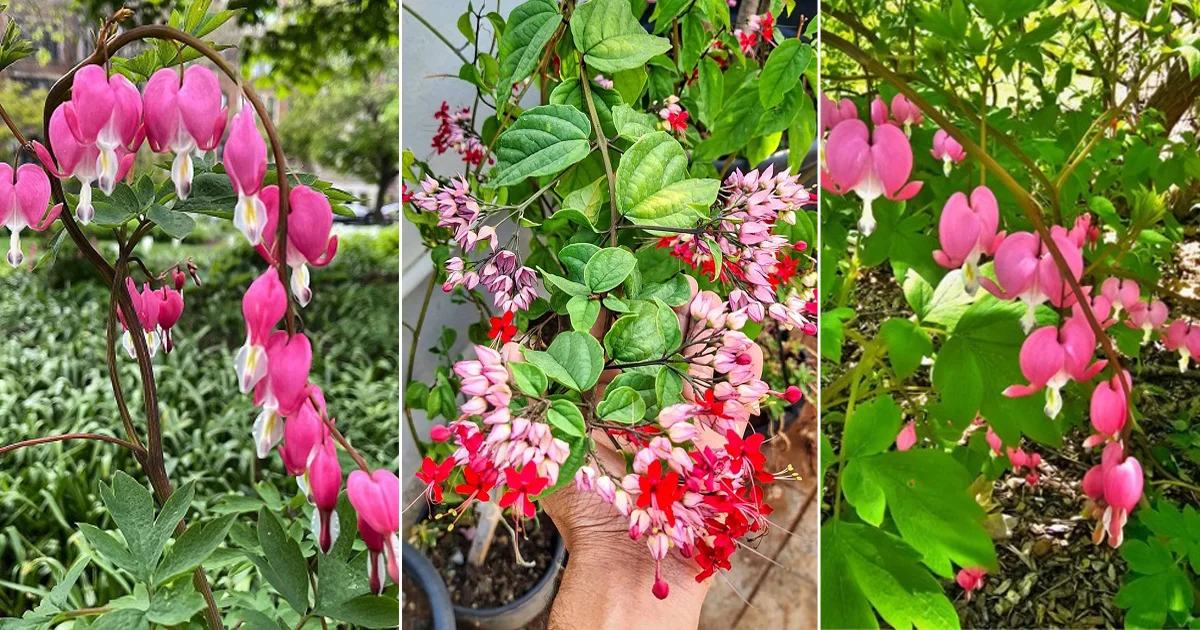Discovering the Bleeding Heart Flower: Meanings and Cultivation Tips
The Bleeding Heart flower, known for its symbolic richness and delicate beauty, holds various interpretations and growing requirements. Here’s a detailed exploration of this enchanting plant:
Origin and Varieties
The Bleeding Heart flower, scientifically named Lamprocapnos spectabilis, originates from northern China, Korea, Japan, and Siberia. It was introduced to England and subsequently North America in the early 1800s. Varieties include the white-petaled Alba, yellow-petaled Gold Heart, and the iconic red-white Valentine, each adding a unique charm to gardens.
Characteristics of the Bleeding Heart
This perennial plant can reach heights of up to 47 inches with a spread of 18 inches. It features rhizomes underground for nutrient storage and bears green seed pod fruits containing numerous small black seeds. The foliage consists of green or occasionally pink three-lobed leaves. The outer petals shine in dark pink, contrasting with the creamy white inner petals, forming distinct heart shapes, which align with its cultural symbolism.
Symbolism and Meanings
The Bleeding Heart flower evokes several symbolic meanings:
- Unconditional Love: Symbolizes profound and unwavering affection.
- Heartbreak and Sadness: Reflects themes of loss and unrequited love.
- Rebirth and Renewal: Associated with springtime, signifying new beginnings.
- Sensitivity and Grace: Its delicate appearance symbolizes compassion and elegance.
- Beauty and Grace: Admired for its graceful presence in gardens and floral arrangements.
Fun Facts
- Pollination: Attracts butterflies and hummingbirds, aiding in seed dispersal through ants attracted to its lipid-rich seeds.
- Fire Resistance: Naturally resistant to fire, which is advantageous in dry climates.
- Toxicity: Toxic to humans and animals if ingested, causing nausea, vomiting, and other symptoms.
Culinary and Medicinal Uses
- Culinary: Not suitable for consumption due to toxicity, especially harmful to pets.
- Medicinal: Historically used in herbal medicine for mild stimulation and relaxation, and as a diuretic. However, caution is advised due to its toxicity.
Cultivation Tips
- Growing Conditions: Thrives in shaded areas with moist, well-drained soil rich in humus. Ideal for gardens with neutral pH.
- Maintenance: Requires regular watering during the growing season, avoiding foliage contact. Fertilize with granular fertilizers for optimal growth.
- Seasonal Care: Deciduous in winter, requiring rest before spring blooming.
Conclusion
The Bleeding Heart flower, with its poignant symbolism and exquisite appearance, enhances any garden with its unique charm. While nurturing this plant requires care and attention, its graceful blooms and rich history make it a rewarding addition to garden landscapes.
Embrace the allure of the Bleeding Heart flower in your garden, but remember to handle it with care due to its toxic nature. Discover the beauty and meaning behind this captivating botanical treasure.




